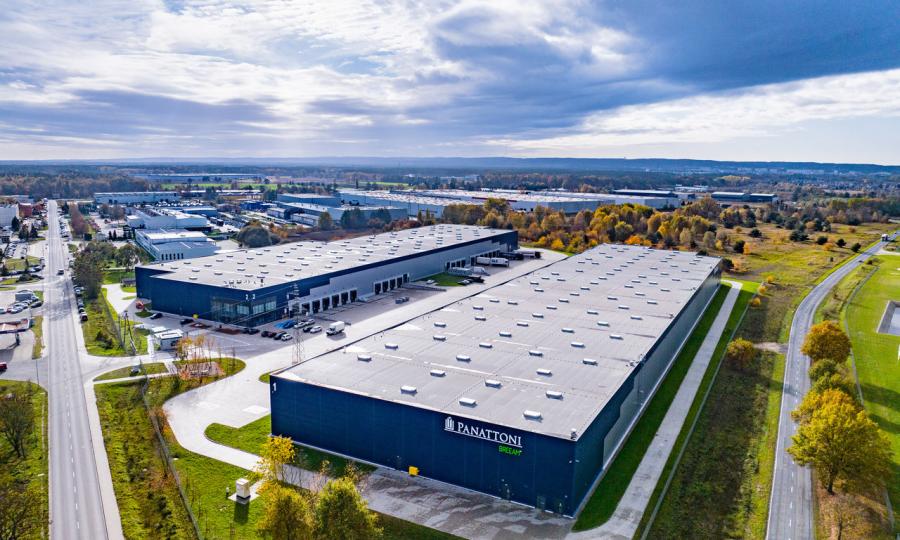Warehouse sector set for 2024 uptick
Warehouse space set to enter a period of stable growth and development after the challenges of the past 12 months
After 2023, when the logistics and warehouse industry struggled with rising rents and vacancy rates, warehouses are entering the new year with good prospects. Colliers experts expect rent stabilization and increased investment activity. Positive impacts on the sector will include the development of electromobility and shipping.
Key topics in the Polish warehouse market in 2023
Weakening demand
Over the course of 2023, demand for industrial and logistics space decreased significantly. The year-on-year decline was around 30% for both gross and net volumes.
“The large year-on-year decline in demand is due to the high base value. It is worth noting that in 2021 – 2022, warehouse space enjoyed the highest tenant interest in the history of this market, and the current level of demand is comparable to the result recorded in 2020. This means that it is still relatively high,” explains Antoni Szwech, an analyst in the Advisory and Market Research Department at Colliers.
Green buildings on the up
The popularity of facilities offering green solutions has increased significantly in recent years, which is reflected in the levels of certificates awarded to buildings. At the beginning of 2023. Panattoni Park Szczecin III became the first industrial and logistics park to receive a BREEAM certificate at the highest – Outstanding – level. In the following months, Panattoni Park Konin and P3 Warsaw II were also certified at the same level.
“Green solutions are becoming a standard in all commercial real estate sectors. In the case of warehouse and logistics space, they are a response to the needs of developers and tenants, who, due to rising energy prices and to meet ESG targets, are investing in ‘green’ warehouses, with photovoltaics at the forefront,” says Maciej Chmielewski, Senior Partner, Logistics and Industrial Space Department at Colliers.
More vacant space
The upward trend in the vacancy rate continued in 2023. In the third quarter of this year, the rate – at 7.7% – reached its highest value in three years. The increase in vacant warehouse and logistics space is also due to the supply of new space – about two-thirds of the vacant space is in facilities completed after 2021.
Decline in space under construction
In 2023, Colliers experts noted a decline in the volume of space under construction. In 2022, it reached a record high of 4.8 million sqm, while in Q2 2023 it was 2.1 million sqm.
“The third quarter of 2023 saw a rebound from the downward trend to 2.5 million sqm. Despite the significant decline in volume, it is worth noting that it remains at a stable level, allowing the market to develop sustainably,” says Szwech.
Construction market recovery
The war in Ukraine caused significant changes in the construction market, reflected in the lower availability of general contractors, higher costs of construction materials, longer construction lead times and fewer new projects started by developers. In 2023, Colliers experts noted an improvement in the market.
“Over the past 12 months, construction costs have fallen, the availability of general contractors has increased and lead times have shortened – to an average of nine months from receipt of all necessary permits to the start of construction. Thus, conditions for new projects have improved significantly,” says Jan Barbasiewicz, Partner, Logistics and Industrial Space, Colliers.
Forecasts for 2024
Growing automotive sector
In the coming year, we can expect further development of the automotive sector in Poland, especially in the area of electromobility. In 2022, Poland was the world’s second largest producer of batteries for electric cars, after China, in terms of production capacity measured in GWh, according to a PSPA report.
“In 2023. Umicore and Volkswagen Group’s PowerCo announced plans to build a factory in Nysa to produce components for electric car batteries. Meanwhile, ElectroMobility Poland has confirmed the purchase of land near Jaworzno, where Izera electric cars are to be produced. A Polish company, Impact Clean Power Technology, is also expected to start battery production next year in Pruszków. The number of new investments already known indicates that electromobility will be one of the sectors driving the development of the industrial and warehouse space industry in the coming year,” Szwech says.
Easing the upward trend in vacancy rates
Since the beginning of 2022, the vacancy rate has been on an upward trend – in Q3 2023 it stood at 7.7%. The current value of this indicator has an impact on increasing the competitiveness of the industrial and warehouse space market. It makes it easier to find suitable space for tenants. However, it is worth noting that further increases in the vacancy rate may change the nature of the market to be much more preferential for the tenant than for the developer.
“Given that today as much as two-thirds of vacant industrial-warehouse space is in facilities less than two years old, it can be expected that developers will limit the construction of new facilities in order to first focus on filling existing space with tenants. Assuming limited new supply, the vacancy rate in 2024 should not exceed 10%. We expect an easing of the upward trend for this rate,” forecasts Chmielewski.
Stabilization of rental rates
Since the beginning of 2022, both base and effective rents have increased significantly. This is a result of, among other things, rising prices for fuel and construction materials, higher project financing costs and deteriorating investment fund sentiment.
“In 2024, the relatively high availability of already existing industrial and warehouse space may put slight pressure on prevailing rental rates. We expect a smoothing out of the upward trend, and in some cases even a reduction in prevailing rental rates,” Barbasiewicz predicts.
More investment activity
The stabilization of the economic situation in Poland in 2024 will allow for increased investor activity. During the previous 12 months, Colliers experts observed a weakening in this area. Economic forecasts provide grounds for an improvement in investment levels, especially in the industrial and logistics space market. According to the National Bank of Poland’s forecasts, inflation – with a 50% likelihood – will be in the range of 3.2% – 6.2% and GDP growth will be between 1.9%-3.8%. Economists at Bank Gospodarstwa Krajowego expect that interest rates could reach 4.25%.
Development of maritime transport
Warehousing, logistics and industrial space in the Baltic regions can benefit from the development of Poland’s maritime infrastructure. In Gdansk, construction is currently underway on another deep-water quay at the Baltic Hub container terminal, which is expected to be completed in 2024. The expansion of the port in Swinoujscie was also confirmed in the final days of 2023. In Gdynia, meanwhile, the construction of an external port is set to be completed, which will enable the handling of Baltmax-rated ocean-going container ships up to 430 meters in length. There are also plans to modernize the port in Elblag, which could have a significant impact on the activation of the Warmian-Masurian province.
“The development of transport infrastructure is one of the factors driving the growth of the industrial-logistics market. Currently, maritime transport is developing particularly rapidly in Poland. A number of completed, finalized, as well as announced investments are a great signal for the industry,” Chmielewski notes.







